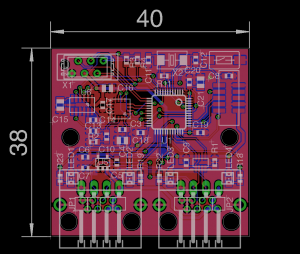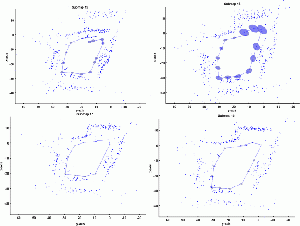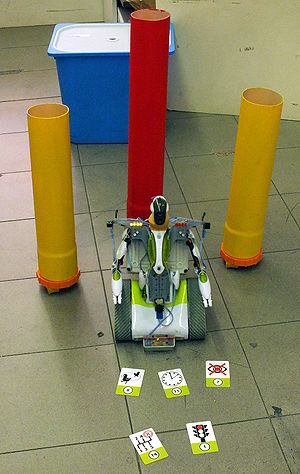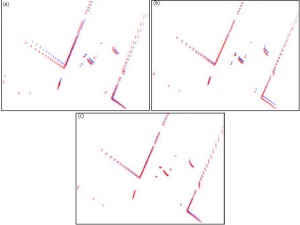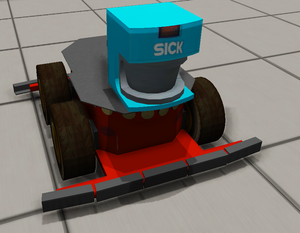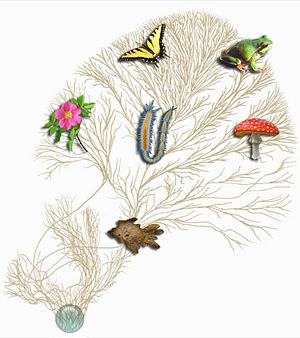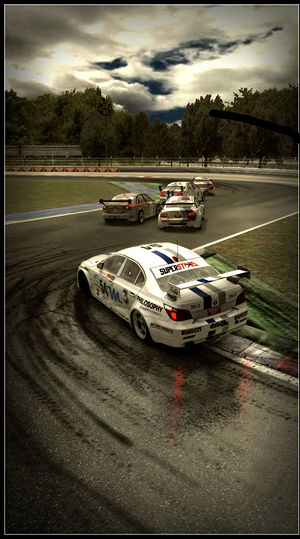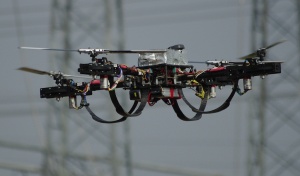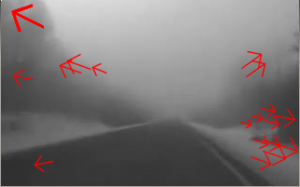Semantic search
| Wiki Page: P300 BCI Title: P300 BCI for ALS patient |
| Wiki Page: Poit cloud SLAM with Microsoft Kinect Title: Point cloud SLAM with Microsoft Kinect Material:
Expected outcome:
Required skills or skills to be acquired:
Tutor: MatteoMatteucci |
| Wiki Page: R2P IMU firmware development Title: Embedded Inertial Measurement Unit for Unmanned Aerial Vehihcles
Material
Expected outcome:
Required skills or skills to be acquired:
Tutor: AndreaBonarini, MartinoMigliavacca, MatteoMatteucci |
| Wiki Page: ROS navigation local planner Title: ROS_navigation_local_planner |
| Wiki Page: Real-time removal of ocular artifact from EEG Title: Real-time removal of ocular artifact from EEG
Tutor: MatteoMatteucci |
| Wiki Page: Robocentric MoonSLAM Title: Robocentric implementation in the MoonSLAM framework Material
Expected outcome:
Required skills or skills to be acquired:
Tutor: MatteoMatteucci, SimoneCeriani |
| Wiki Page: Robot Games Title: Robot Games |
| Wiki Page: Scan Matching Odometry and Multisensor SLAM Title: Scan Matching Odometry and Multisensor SLAM Material:
Expected outcome:
Required skills or skills to be acquired:
Tutor: MatteoMatteucci, SimoneCeriani, DavideCucci |
| Wiki Page: Scripting language on embedded platforms Title: Scripting language on embedded platforms This project aims to port the abstract machine to ARM Cortex-M3 microcontrollers, add a set of functions to interface with the underlying hardware peripherals and then to embed it as ChibiOS/RT (http://www.chibios.org) thread. |
| Wiki Page: Self calibration of multiple odometric sensors Title: Self calibration of multiple odometric sensors mounted on the same platform Material:
Expected outcome:
Required skills or skills to be acquired:
Tutor: MatteoMatteucci, SimoneCeriani, DavideCucci |
| Wiki Page: Simulation in robotics using UDK USARSIM Title: Simulation_in_robotics_using_UDK_USARSIM
Results will be included in the USARSim project and used by the RoboCup community. |
| Wiki Page: Soccer Robots Title: Soccer Robots
The project can be turned into a thesis by facing different problems in depth. |
| Wiki Page: Social Network Data Extraction from Online Communities Title: Social Network Data Extraction From Online Communities |
| Wiki Page: Stability and motion control of a balancing robot Title: Stability and motion control of a balancing robot TiltOne is a robot with only two wheels that can stand in vertical position following an unstable equilibrium point. The control is applied by commanding an amount of torque to the wheels, allowing the robot to mantain it's gravity center vertical aligned to the wheel axis. The aim of the project proposal is to implement and compare different control solutions, based on classical approach (as PID and LQR control) and Machine Learning approach (as Reinforcement Learning control policies), that allow the robot to move following a given trajectory at a given speed. |
| Wiki Page: Statistical inference for phylogenetic trees Title: Statistical inference for phylogenetic trees The project will focus on the understanding of the problem and on the implementation of different algorithms, so (C/C++ or Matlab or R) coding will be required. Since the approach will be based on statistical models, the student is supposed to be comfortable with notions that come from probability and statistics courses. The project is thought to be extended to master thesis, according to interesting and novel directions of research that will emerge in the first part of the work. Possible ideas may concern the proposal and implementation of new algorithms, based on recent approaches to phylogenetic inference available in the literature, as in (3) and (4). In this case the thesis requires some extra effort in order to build and consolidate some background in math in oder to understand some recent literature, especially in (mathematical) statistics and, for example, in the emerging field of algebraic statistics (5). Other possible novel applications of phylogenetic trees have been proposed in contexts different from biology, as in (6). Malware (malicious software) is software designed to infiltrate a computer without the owner's informed consent. Often malwares are related to previous programs thought evolutionary relationships, i.e., new malwares appear as small mutations of previous softwares. We are interested in the use of techniques from phylogenetic trees to create a taxonomy of real world malwares. Picture taken from http://www.tolweb.org/tree/ and http://www.blogscienze.com Bibliography
Tutor: MatteoMatteucci, LuigiMalago, StefanoZanero |
| Wiki Page: Tesi/Stage in Milestone Title: Tesi/Stage in Milestone Per maggiori informazioni, inviare una mail a lanzi@elet.polimi.it Comportamenti di Gruppo in Videogiochi di Corse Automobilistiche Questa tesi prevede lo studio delle dinamiche dei comportamenti dei piloti in competizioni automobilistiche su circuito e lo sviluppo di una intelligenza artificiale in grado di imitare i comportamenti di un vero mevero pilota. In particolare, il lavoro di tesi si concentrerà su comportamenti di gruppo come i sorpassi, le manovre per evitare collisioni con altri veicoli, il recupero da situazioni di emergenza, ecc. Terminatala fase di analisi e l’implementazione di un prototipo, verrà valutata la possibilità di inserire tale implementazione all’interno di un videogioco di ultima generazione. Comportamenti di Gruppo in Videogiochi di Corse Motociclistiche Questa tesi prevede lo studio delle dinamiche dei comportamenti dei piloti in competizioni motociclistiche su circuito e lo sviluppo di una intelligenza artificiale in grado di imitare i comportamenti di un vero vero pilota. In particolare, il lavoro di tesi si concentrerà su comportamenti di gruppo come i sorpassi, le manovre per evitare collisioni con altre moto, il recupero da situazioni di emergenza, ecc. Terminata la fase di analisi e l’implementazione di un prototipo, verrà valutata la possibilità di inserire tale implementazione all’interno di un videogioco di ultima generazione. Intelligenza Artificiale in Videogiochi di Corse Motociclistiche La tesi prevede l’analisi e l’implementazione dell’intelligenza artificiale per un videogioco di corse motociclistiche. Il sistema dovrà essere in grado di eseguire in modo corretto ed efficace un insieme di manovre complesse quali: l’accelerazione da fermo, la frenata in situazioni limite, l’approccio ad una curva che preveda la fase di stacco, di impostazione, di percorrenza e di uscita, l’approccio a serie di curve, ecc. Si valuterà la possibilità di inserire tale implementazione all’interno di un videogioco di ultima generazione. |
| Wiki Page: Unmanned Aerial Vehicles Visual Navigation Title: A critical review on the state of the art in visual navigation for unmanned aerial vehicles Material:
Expected outcome:
Required skills or skills to be acquired:
Tutor: MatteoMatteucci |
| Wiki Page: Use case design and implementation for semantic annotations Title: Use case design and implementation for semantic annotation One possible example is the annotation of mp3 files available on the Web. They can be classified in genres or associated to datatype properties, such as rating, title, length and release date... also exploiting data already available in http://musicbrainz.org/ |
| Wiki Page: Visibility Rating under Foggy Conditions Title: Visibility Rating under Foggy Conditions |
| Wiki Page: Visual Odometry for an Omni-directional Camera Title: Visual Odometry for an Omni-directional Camera
Material:
Expected outcome:
Required skills or skills to be acquired:
Tutor: VincenzoCaglioti |
- "]]User:MatteoMatteucci" is not in the list of possible values (Active, Closed) for this property.
- Some use of "<nowiki>[[</nowiki>" in your query was not closed by a matching "]]".

